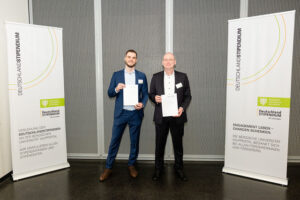The use of electrical and electronic devices is constantly increasing in our world, and there is no end to this growth in sight. However, for these devices to operate without interference, “electromagnetically compatible” conditions must be present. This means that a device itself must work satisfactorily in that it does not cause electromagnetic interference in the environment that would be unacceptable to other devices.
Electromagnetic interference can cause various faults that are often not easy to diagnose. These disturbances range from crackling and noise in a radio receiver, to data errors and processor failures in computer technology, and even insulation breakdowns. In addition, they can propagate in different ways depending on the frequency.
To suppress conducted interference and to ensure EMC guidelines, mains filters with appropriate values are required. By maximizing impedance mismatch, the use of EMC filters prevents the propagation of interference. The filtering effect extends in both directions. This means that interference from the consumer to the mains is attenuated as well as from the mains to the consumer.
Important to know: Low-frequency interference below 10 MHz propagates mainly via conducted paths through galvanic couplings. Higher-frequency interference > 30 MHz, on the other hand, is mostly transmitted via radiation. The range in between is an addition of the transmission mechanisms.




